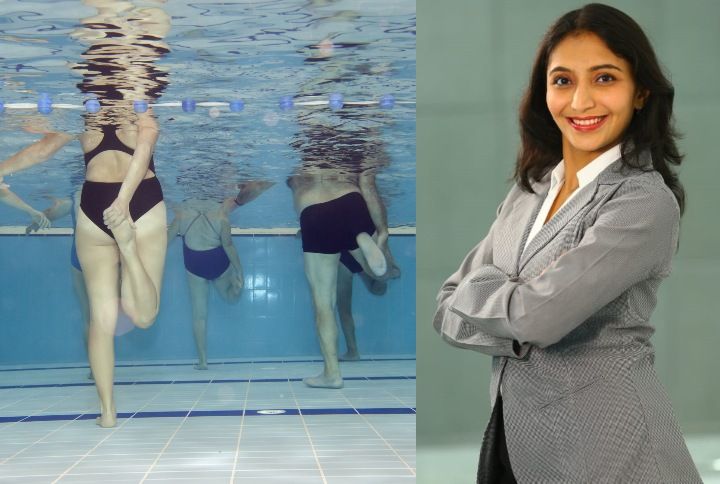As the adage goes,
Nothing is softer or more flexible than water, yet nothing can resist it.
Therapeutic use of water is known to man for centuries. Be it immersion tubs of Switzerland, exotic baths or Rome or the hot mineral water springs of Kerala, our ancient medicinal wisdom has always tapped into the curative properties of water. Since the 20th century, water is increasingly used in its current form of aquatic therapy, for the rehabilitation of movement. The American Physical Therapy Association (APTA) formally recognised the aquatic therapy section within APTA in 1992, as part of physical therapy and rehabilitation.
We spoke to Dr Brinda Merchant, Lead Physiotherapist for Paediatrics and Neurology at AquaCentric Therapy to learn more about what exactly aqua therapy is, the benefits of it and who should opt for it. She explained both in-depth, so scroll down to read all about it!

What Is Aqua/Aquatic Therapy?
Aquatic therapy or aqua therapy is most simply described as physical rehabilitation/physical therapy in water. It includes water-based treatment interventions or exercises of therapeutic intent for rehabilitation, recovery, fitness and relaxation. Mechanical and thermal properties of water are used, in combination with effects of movement. It may be used for persons across all age groups and abilities.
Treatments should be carried out by physiotherapists and occupational therapists that are specially trained in aquatic therapy. And it should ideally be in a purpose-built and temperature-controlled therapeutic pool.
Fun fact: President Roosevelt, 32nd President of the United States and Polio survivor, famously used aquatic therapy to improve his walking ability and muscle strength, post his bout with poliomyelitis. It was also integral to ‘Superman’ Christopher Reeves‘ rehabilitation program after he suffered a debilitating spinal cord injury leading to paralysis.
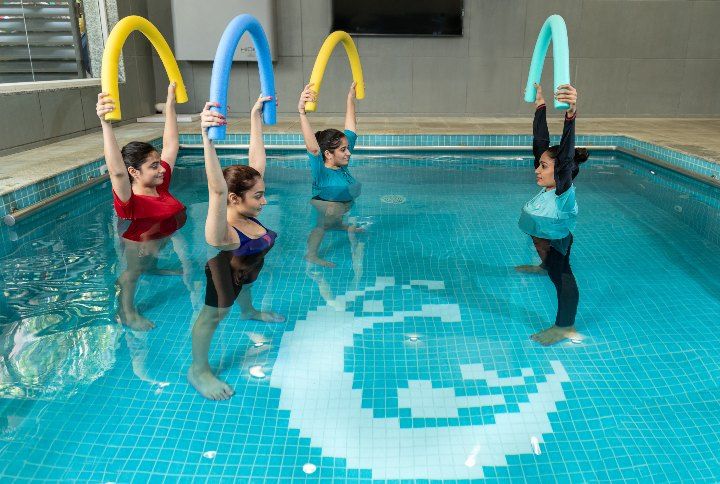
Why Should One Opt For Aqua Therapy?
The effects of aquatic therapy are based on the physical properties of water. Water is a buoyant medium and counterbalances gravity. Resultantly body weight experienced is as less than 1/10th of original body weight. For example, someone weighing 60 kgs on land would experience only about 10 kgs of loading when immersed to about chest depth. This makes movement earlier.
Water is viscous in nature, which means resistance offered by water during movement is greater than what is experienced on land. This offers a possibility of resistance training in an environment which produces low joint impact. Dr Brinda also shared about two cases where patients opted for aqua therapy and explained how it helped them. Here’s what she had to say,
Case in point is of a 60-year-old lady with a history of multiple surgeries and gynaecological issues, who suffered from severe knee arthritis and balance concerns. Obesity added to her health problems. Exercising on land was extremely uncomfortable for her, with a limited repertoire of activity.
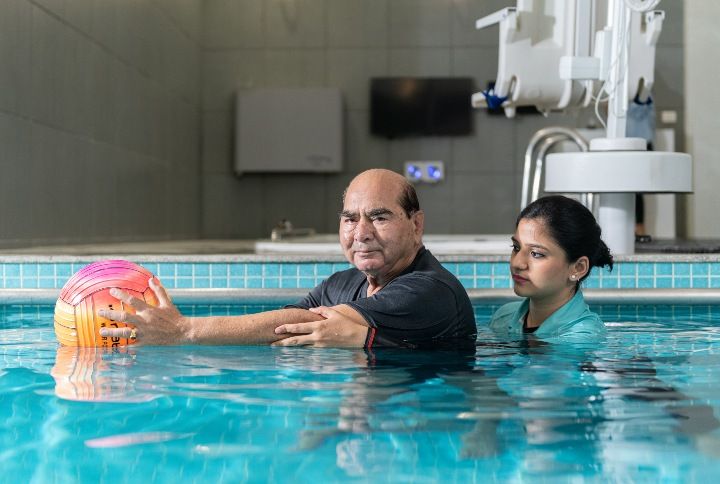
Aquatic therapy as a mode of therapy afforded her a safe method of exercise, as water literally acts as physical support. Her joints were unloaded, and she could move easily. The warmth of the pool relaxed her muscles, assisted in pain reduction and made exercising a pain-free experience. Consequently, she was able to achieve her weight loss goals, has better-toned muscles, improved stamina and experienced an overall sense of improved health.
Forces innate to water may assist movement or resist movement. Smooth flow of movements is promoted.
Case in point is of a 35-year-old pregnant lady who was highly stressed and had resultant health issues. Physicians advised aquatic therapy as a method to de-stress, as well as a form of gentle exercise. Clinical Watsu, which is a method of water-based relaxation based on free-flowing movements meant to relax was used as intervention, along with Ai Chi, which is a sequence of gentle active exercise—almost meditative in nature. Lady in question had a full-term safe delivery and gave birth to a healthy baby.
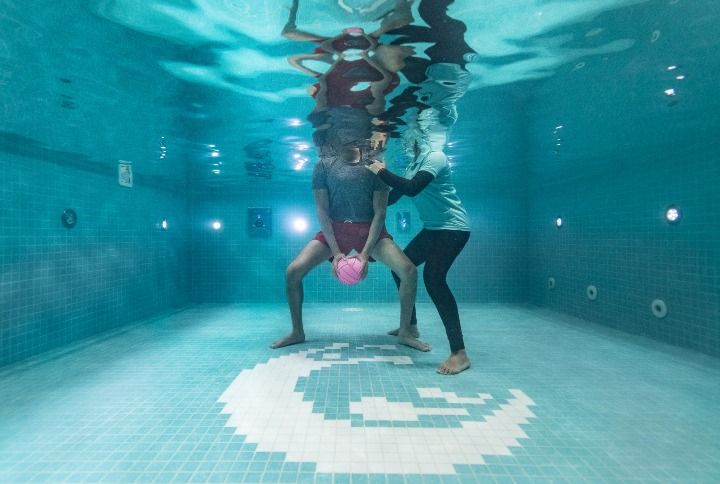
Aquatic Therapy is used for athletic rehabilitation by world-renowned organisations. With correct implementation it supports ‘between sessions’ recovery and allows for early introduction of plyometrics and power training, especially post injuries. This form of intervention is especially a useful alternative for post-injury recovery of athletes, as high-intensity exercise can be continued with relatively low joint impact.
Water as an environment comes with a natural element of fun and play. This is especially useful for providing therapy to children, with concerns such as Cerebral Palsy, which is brain damage at birth. Cerebral palsy is associated with developmental delay as well as problems with posture and movement, muscle weakness and tightness associated with spasticity. Aquatic therapy promotes movement in such children in a manner that is playful and enjoyable.

Benefits Of Aqua Therapy
- Improved muscle strength
- Pain relief
- Improved circulation
- Decrease in abnormal muscle tone, stiffness and rigidity
- Improved range of motion and flexibility
- Movement skills training
- Improved stamina
- Relaxation
- Improved balance
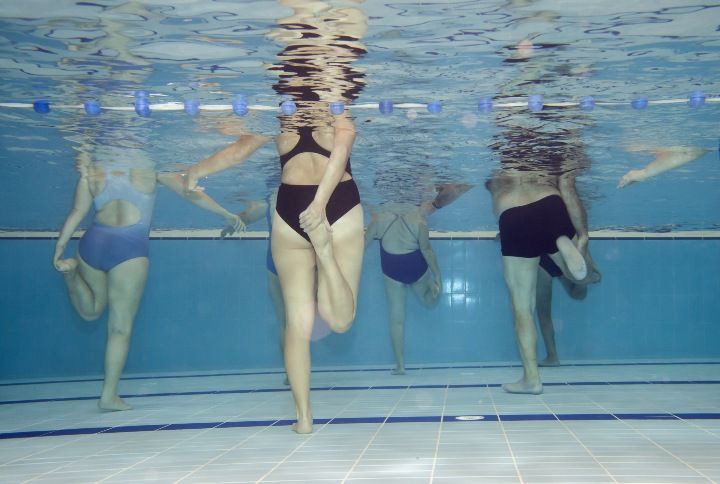
Who Would Benefit From Aquatic Therapy?
Aqua Therapy is beneficial for most orthopaedic and neurological conditions which will require physical rehabilitation. Additionally, it is also widely accepted and used as a preventive maintenance tool. It is useful in persons with conditions such as but not limited to:
- Chronic pain, including back pain and joint pain
- Arthritis
- Obesity
- Weak muscles
- Low endurance/stamina
- Pre-natal and post-natal phase
- Ligament injuries and sprains
- Sports injury
- Muscle spasm
- Paresis or Paralysis
- Stroke recovery
- Neurological concerns such as Parkinson’s and Multiple Sclerosis
- Neuropathy
- Balance and coordination issues
In conclusion, Aqua Therapy when provided by a trained practitioner may be an extremely effective mode of therapeutic intervention across ages and abilities, for working towards treatment goals.
Join Malini’s Girl Tribe to be a part of the conversation.

